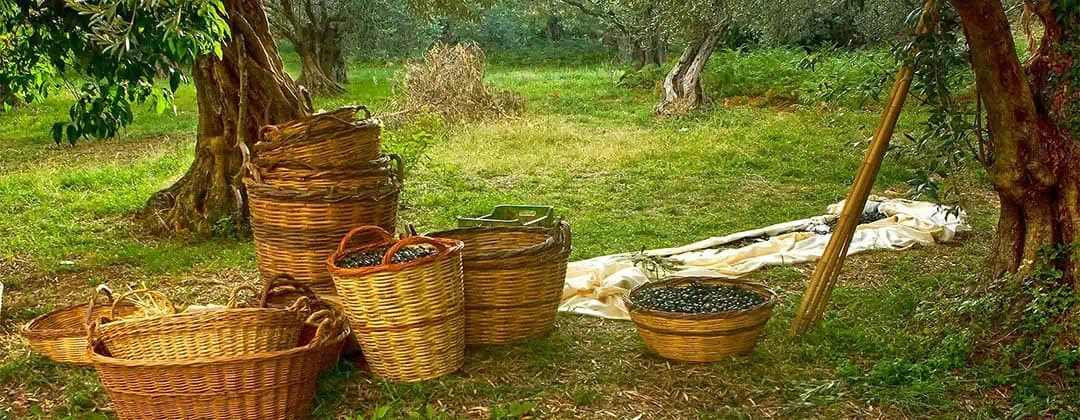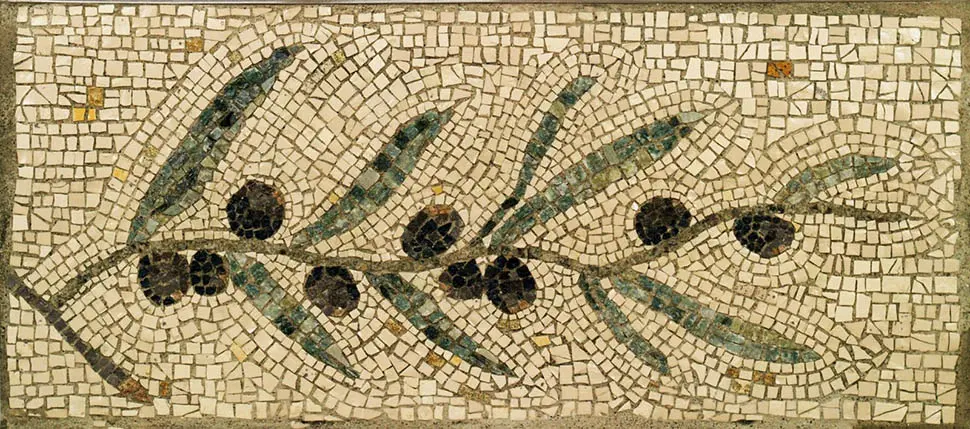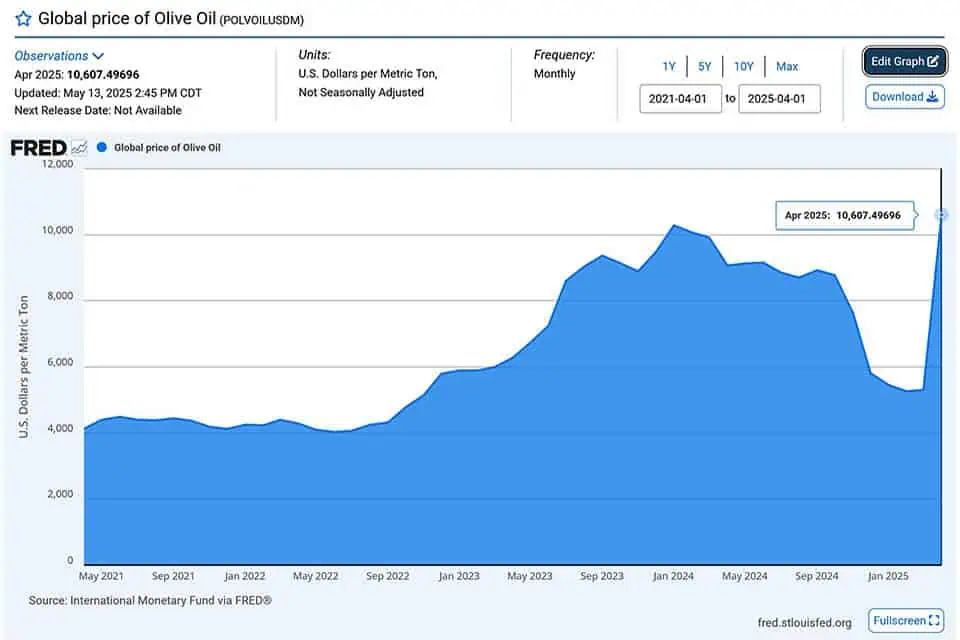History of the Olive Tree and Olive Oil
History of the Olive Tree
According to scientists, the exact place where the olive tree was found for the first time, is the wider Mediterranean area. The first olive cultivation in the world took place in Greece, and more specifically in Crete. This happened around 3.500 BC. during the Early Minoan period. In this period the olive tree was in a wilder form than the tree we know today. After 2.000 BC olive cultivation in Crete became more intense and systematic, playing the most important role in the island’s economy. From Crete began the first export of olive oil, not only to mainland Greece but also to North Africa and Asia Minor.

History of the Olive Oil in Greece
Cultivation soon spread to mainland Greece and the olive and its blessed product, olive oil, became synonymous with the Greek Diet over the centuries. The Mycenaean civilization (1.600-1.150 BC) followed the Minoan in mainland Greece. Olive oil production was very important to the economy of this society. The decipherment of the “Linear B” script brought to light valuable information about the production, trade and export of olive oil in Mycenaean Greece, as we can see in the palace archives of Mycenae and Pylos.
In the 6th BC century, Solon, the great Athenian legislator, drew up the first law to protect the olive tree with the exception of uncontrolled logging. The olive tree was a symbol in ancient Greece and olive oil was used not only for its valuable nutritional value, but also for medicinal purposes. Between the 7th and 3rd centuries BC. ancient philosophers, physicians and historians undertook the botanical classification of the olive and referred to the healing properties of olive oil. It is this knowledge that has been “rediscovered” today as modern scientists find new evidence why the Mediterranean Diets are so healthy.
During Byzantine times things did not change. The production of olive oil in the Greek territories was important due to the immense size of the empire. The empire itself comprised almost half of the producing areas in – the then – known world and the product was exported around the world.
Hippocrates and other ancient physicians used olive oil to treat diseases.

traditional cultivation of olive trees in Crete Greece
Olive Branch
the olive branch is a symbol of peace and victory associated with customs of ancient Greece and connected with supplication to gods and persons in power. It is found in most cultures of the Mediterranean basin and became associated with peace in the modern world. Ancient Greece and Rome: In Greek tradition, a Hiketeria (ἱκετηρία) was an olive branch held by supplicants to show their status as such when approaching persons of power or in temples when supplicating the gods.
In Greek mythology, Athena competed with Poseidon for possession of Athens. Poseidon claimed possession by thrusting his trident into the Acropolis, where a well of sea-water gushed out. Athena took possession by planting the first olive tree beside the well. The court of gods and goddesses ruled that Athena had the better right to the land because she had given it the better gift. Olive wreaths were worn by brides and awarded to Olympic victors.
The olive branch was one of the attributes of Eirene on Roman Imperial coins. For example, the reverse of a tetradrachm of Vespasian from Alexandria, 70-71 AD, shows Eirene standing holding a branch upward in her right hand (see more at Olive Branch – Wikipedia)

The Olive Tree and Olive Oil production in Greece
Olive cultivation in Greece represents 87,21% of tree crops. Greece is the third olive producing country in the world, after Spain and Italy. Worldwide, Greece is first in the production of black olives and third in the production of olive oil. More than 132 million olive trees are cultivated on its territory, from which approximately 350.000 tons of olive oil are produced annually, of which 82% belongs to the extra virgin category. Also, about 21 million olive trees are cultivated for the production of table olives.

olive oil cultivation in ancient Greece
The Olive Tree and Olive Oil production in Europe
In Europe, olive cultivation occurs in the countries around the Mediterranean (Spain, Portugal, Italy, France, Albania, Croatia and Greece). Spain is in the last decade the first olive growing country in the world with 200.000.000 olive trees, followed by Italy with 185.000.000 olive trees and Greece with 133.000.000 olive trees.

Olive Oil plantations in the Mediterranean
The Olive Tree and Olive Oil production worldwide
The olive is a historical plant and its cultivation has been done for many centuries both in Greece and in other countries in the world. Today, on all five continents (Europe, Asia, America, Africa and Oceania) we find olive groves. Europe with approximately 500 million trees has more than ¾ of the global production, followed by Asia (Syria, Iran, China, S. Arabia, India, Japan, Pakistan and Iraq) with 13%, Africa (Morocco, Tunisia, South Africa) with 8% and the Americas (USA, Argentina, Mexico, Brazil, Peru, Uruguay and Chile) with 3%. In Oceania (Australia and S. Zealand) the planting of olive trees has recently begun. The establishment of olive trees in the countries of India, Japan, Korea and Pakistan is at an experimental stage, while in China, S. Zealand, Brazil and S. Arabia, olive planting has recently begun. Traditional olive growing countries besides the European ones are the USA, Argentina, Chile, Iran and Iraq.
SEE ALSO:
The Cretan Extra Virgin Olive Oil
The Olive in the Ancient Mediterranean

cultivation of olive trees in Crete Greece
VIDEO: a 2 minute Visual History of the 6000 Year-Old Olive
Where did the olive originate? What is the history of the olive and the history of olive oil?
This 2-minute visual history of the olive shows the migration of the olive from Asia Minor to the Middle East, the Mediterranean basin, and on to Europe and the Americas. This healthy, gourmet oil has been used in religious ceremonies and the Mediterranean diet for millennia (source: Olive Oil Source)

CRITIDA BIO CRETAN OLIVE OIL - Producers of Premium Cretan Culinary Products: Our Food Products are EXPORTED WORLDWIDE to 40+ countries, since 1998 - Join Us!
We are a centuries-long family company (est 1912) in the production of EVOO Olive Oil on the island of CRETE in GREECE. Our Premium Cretan extra virgin olive oil and culinary food products are exported in 40+ countries worldwide to a carefully selected network of partners. CONTACT US, BE OUR NEXT VALUED BUSINESS PARTNER ! for Extra Virgin Olive Oil (EVOO) - Organic (Bio) Extra Virgin Olive Oil (Organic EVOO) - Greek Table Olives - Balsamic Vinegars - Delicatessen, all from CRETE GREECE
Related posts
Speciality & Fine Food Fair 2023 – London, 11-12 Sep 2023
We would like to inform you that our company Critida – Bio Cretan Olive Oil will participate
Critida Bio Cretan Olive Oil at SIAL Paris 2022 Food Trade Show
Critida Bio Cretan Olive Oil will participate in SIAL Paris 2022 the trade show for food and b
Olive Oil prices in 2025 – the reasons why the olive oil prices dropped
What are the olive oil prices in 2025? Why the cost to buy Extra Virgin Olive Oil is almost halved t
How long lasts a bottle of extra virgin olive oil?
For how long can extra virgin olive oil last – olive oil’s expiration date Good Greek ex





